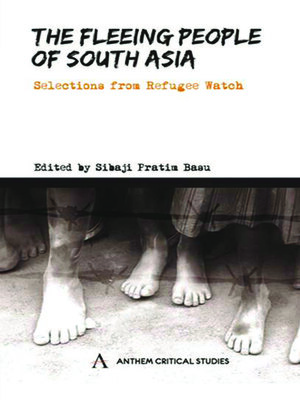The Fleeing People of South Asia
ebook ∣ Selections from Refugee Watch · Anthem South Asian Studies
By Sibaji Pratim Basu

Sign up to save your library
With an OverDrive account, you can save your favorite libraries for at-a-glance information about availability. Find out more about OverDrive accounts.
Find this title in Libby, the library reading app by OverDrive.



Search for a digital library with this title
Title found at these libraries:
| Library Name | Distance |
|---|---|
| Loading... |
The history of human civilizations is also the history of human displacements. From ancient times to the contemporary age, every year millions of people flee from their homes and lands in the face of imminent persecution for physical, social and cultural traits, which they cannot control, or exercising their religious or political beliefs. Large-scale 'development' projects as well as natural calamities have also caused large-scale displacements followed by ill-managed rehabilitation regimes. As a result, over one percent of the world's total population today consists of refugees and internally displaced persons. South Asia is the fourth largest refugee producing region in the world. There is a close link between state formation and forced migration in this region. Ethnic violence, development work, natural calamities and climatic changes also make people, especially the indigenous ones, flee and settle in extremely unbearable new and foreign conditions. Women and children constitute the bulk of the displaced population. 'Refugee Watch', in its decade-long 30-volume journey, has sought to capture the agony, tension and struggle of the refugees and internally displaced in South Asia in its different dimensions. The present Selections are a sincere attempt to grasp the multi-dimensionality of the journal within two covers.
|This definitive collection of essays from 'Refugee Watch' is a comprehensive study of human displacement, covering many regions, addressing differing causes of refugee crises, and providing analysis on guiding principles, human rights and women's rights. 'Refugee Watch', in its decade-long 30-volume journey, has sought to capture the agony, tension and struggle of the refugees and internally displaced in South Asia in its different dimensions. The present Selections are a sincere attempt to grasp the multi-dimensionality of the journal within two covers.







